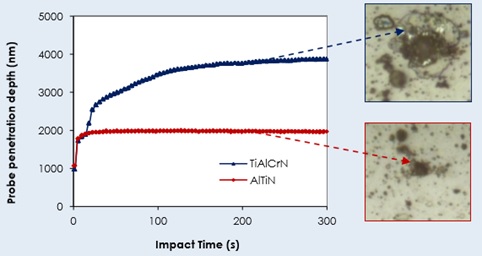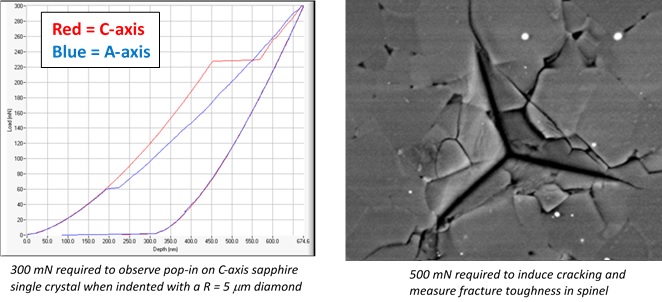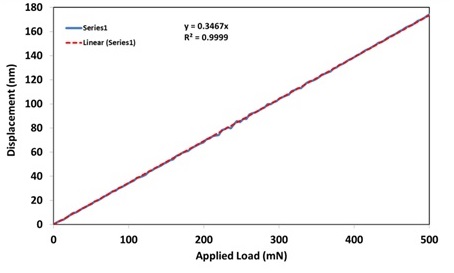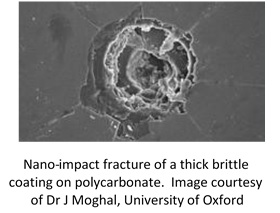How does the NanoTest Vantage differ from other nanoindenters? What are the important factors for temperature testing? Find out answers to these questions and more in our Frequently Asked Questions. See how our instruments can benefit your organisation.
Frequently Asked Questions
The NanoTest Vantage has been designed to be much more than a simple nanoindenter.
Combining multiple nanomechanical and tribological test techniques, over multiple force scales and multiple environments in a single platform. The fully ISO and ASTM compliant NanoTest Vantage provides the most complete and reliable solution on the market.
Designed to be fully modular, it can be configured into a complete integrated multifunctional nanomechanical test centre, with a range of test capability far exceeding that available on other nanoindenters.
There are many reasons why a having a maximum load of 500 mN (low load head) and 30 N (high load head) can be very useful
For example:
- To improve data reliability on rough surfaces
- To observe pop-ins with larger radius probes and study size effects in plasticity
- To produce well-defined crack patterns and measure fracture toughness
- To avoid tip-wear in nano-scratch testing
- To enable more reliable calibration of frame compliance
- To be able to measure more of the whole system response in a multi-layer coating
- To be able to test adhesion in thicker coatings
Constant frame stiffness is critical for ensuring accurate elastic modulus measurements across the entire load range. A simple direct frame stiffness calibration method developed by MML has been used to prove that the frame stiffness of the NanoTest does not vary across the entire load range of each loading head. The correlation coefficient is 0.9999 over the full load range.
However, researchers (1, 2) have reported that the stiffness of other nanoindenter instruments is not constant, especially at lower forces which results in questionable data. The superiority of the NanoTest is shown (comparison with data from ref 1) below. The stiffness of the competitor instrument is not constant, especially below 60 mN.
- p233 in T. Chudoba, (2006) Nanostructured coatings, A. Cavaleiro and J.Th.M. De Hosson, eds. Chapter 6, “Measurement of hardness and Young’s modulus of coatings by nanoindentation” (Springer) pp216-260.
- Effects of machine stiffness on the loading–displacement curve during spherical nano-indentation, W. Li et al, J. Mater. Res., 1903-1911, 28, 2013
When measuring at elevated temperatures, it is essential that the sample and indenter are the same temperature when the indentation takes place. Any mismatch will result in excessive thermal drift, an error on the measurement caused by an expansion or contraction of the sample, indenter or instrument.

NanoTest systems have a number of design advantages which result in ultra-low thermal drift, right up to the maximum temperature of 850 °C.
- Active tip heating – the indenter and the sample are both actively and independently heated, resulting in an isothermal contact before the experiment begins.
- Horizontal loading – the unique loading configuration of the NanoTest means that there is no heat flow onto the loading head or depth measurement sensor.
- Highly localised heating – a heat shield and insulating shroud around the heated zone ensures instrument stability during high temperature experiments.
- Patented control protocol – software routines are used to precisely match the indenter and stage temperatures to within an accuracy of 0.1 °C.
- Time-dependent measurements – As no significant thermal drift occurs during high temperature measurements it becomes possible to perform long duration tests such as indentation creep tests that are not possible with other systems.
Nano-impact works by accelerating the probe towards the sample surface under controlled conditions. This high energy impact, combined with the geometry of a cube corner indenter results in a very high strain rate contact – much higher than the strain rates typically achieved with indentation.
Single impacts can be used for dynamic hardness, yield stress and energy absorption properties while repetitive impacts are used for assessing fatigue resistance. Nano-impact complements nano-indentation techniques when toughness is important and hardness alone is insufficient.
Impact with the NanoTest has been shown to be an effective accelerated wear test capable of accurately simulating interrupted contacts in metal cutting, erosive wear, or in auto/aero-engines.

There are a number of factors which make the NanoTest particularly well suited for nano and micro scratch and wear testing:
- Load range – up to 500 mN with the low load head, and 30 N with the high load. Using higher loads allows for the use of larger radius indenters for the investigation of thicker, harder coatings whilst minimising the risk of damaging the indenter.
- The high lateral stiffness of the NanoTest means that the probe does not get twisted. The scratch tracks remain straight and the friction measurements are much more reliable.
- Highly sensitive friction transducer to be used to (1) measure lateral forces with greater precision (2) perform measurements across the entire 500 mN load range.
Yes, Micro Materials have partnered with the Saxonian Institute of Surface Mechanics to provide advanced analysis software for indentation and scratch experiments.
The Indentation and Scratch Analyzer (ISA) includes the ‘Oliver & Pharr for Coatings’ program which enables the user to mechanically characterise complex surfaces by fully automatic analysis of indentation measurements. This program enables the user to calculate Young’s modulus, yield strength, Poisson’s ratio, intrinsic, thermal, or residual stresses (and many more materials properties) of up to 100 layers (including the substrate).
The ISA also includes the ‘Scratch-Stress Analyzer’. This easy-to-use software enables the user to conduct a physical analysis of scratch tests as it evaluates the distribution of 28 field components (e.g. von Mises stress, normal stresses, shear stresses, etc.) of bulk materials and coated systems (up to 100 layers).
Micro Materials have been at the forefront of nanomechanics innovation since 1988 – our pioneering approach as led to many world firsts, including the first commercial nano-impact tester and the first commercial high temperature nanoindentation stage.
We are now the only independent manufacturer of nanomechanical test instrumentation. This provides us with the flexibility to develop new capabilities in response to customer and market requirements. We focus on listening to their customers and helping them develop solutions that they require in order to push the boundaries of nanomechanical testing.
The integrity, reliability and accuracy of our equipment is paramount, as is our relationship with our customers.





